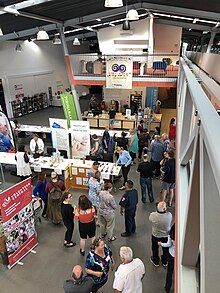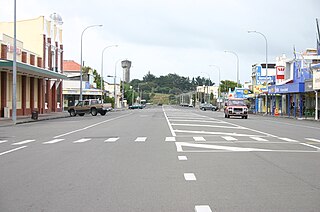
Foxton is a town in the Manawatū-Whanganui region of New Zealand - on the lower west coast of the North Island, in the Horowhenua district, 30 km (19 mi) southwest of Palmerston North and just north of Levin. The town is located close to the banks of the Manawatū River. It is situated on State Highway 1, roughly in the middle between Tongariro National Park and Wellington.

Horowhenua District is a territorial authority district on the west coast of the North Island of New Zealand, administered by Horowhenua District Council. Located north of Wellington and Kāpiti, it stretches from slightly north of the town of Ōtaki in the south to just south of Himatangi in the north, and from the coast to the top of the Tararua Range. It is in the Manawatū-Whanganui local government region. The name Horowhenua is Māori for landslide.
Tungia Dorothea Gloria Baker was a New Zealand actor, weaver, and administrator. Her notable acting roles included Ngahuia in the 1980s television drama Open House and Hira in the 1993 film The Piano. Baker was influential in contemporary Māori theatre, Māori film making and Māori arts. She named the Taki Rua Theatre, and was a founding member of Māori artists' collectives Te Manu Aute and Haeata.
Ngāti Raukawa is a Māori iwi with traditional bases in the Waikato, Taupō and Manawatu/Horowhenua regions of New Zealand. In 2006, 29,418 Māori registered their affiliation with Ngāti Raukawa.
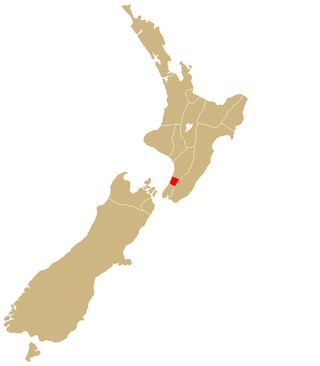
Muaūpoko is a Māori iwi on the Kāpiti Coast of New Zealand.
Diggeress Rangituatahi Te Kanawa was a New Zealand Māori tohunga raranga of Ngāti Maniapoto and Ngāti Kinohaku descent. At the time of her death she was regarded as New Zealand's most renowned weaver.
The Te Waka Toi awards are the premier awards in the field of ngā toi Māori. They have been awarded by Creative New Zealand and predecessors since 1986. The awards recognise tohunga, artists and community leaders across all arts forms including visual and performing arts.
Te Moana O Raukawa Māori and Te Ūpoko o te Ika a Māui Māori are a Māori iwi from Manawatu, Horowhenua, Kāpiti Coast and Wellington. They include the iwi (tribes) of Rangitāne, Muaūpoko, Ngāti Raukawa, Ngāti Toa, Te Atiawa ki Whakarongotai, Te Āti Awa and Taranaki Whānui ki te Upoko o te Ika.

In New Zealand, community boards are governed by the provisions of Part 4 of the Local Government Act 2002 and can be created, or dissolved by territorial authorities, 40 out of 78 of which have 111 boards. In addition Auckland has 21 local boards and some councils have community committees.

Moutoa is a rural community in the Horowhenua District and Manawatū-Whanganui region of New Zealand's North Island, on the Manawatu River. It is located Foxton and State Highway 1 in the west, and Shannon and State Highway 57 in the west.
Koputaroa, Koputāroa or Kōputaroa is a rural community in the Horowhenua District and Manawatū-Whanganui region of New Zealand's North Island.
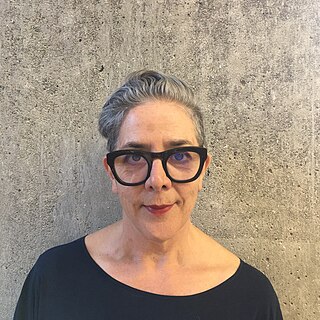
Susan Margaret Smith, known as Huhana Smith, is a contemporary New Zealand artist and academic, and head of Whiti o Rehua School of Art at Massey University. Between 2003 and 2009, she was senior curator Māori at Te Papa.
Awhina Tamarapa is a New Zealand Māori museum curator and writer in the field of museum studies. She has tribal affiliations to Ngāti Kahungunu, Ngāti Ruanui and Ngāti Pikiao.
Poroutawhao is a small rural settlement in the Horowhenua District of New Zealand's North Island. It is located just north-west of Levin on State Highway 1.
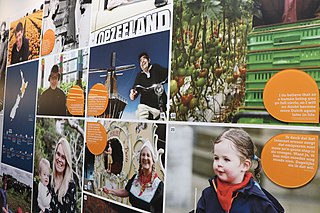
Oranjehof or Oranjehof Dutch Connection Centre is one of the two museums that are part of the multi-cultural, multi-purpose visitor and community hub Te Awahou Nieuwe Stroom in Foxton, New Zealand, just over an hour's drive north of Wellington.
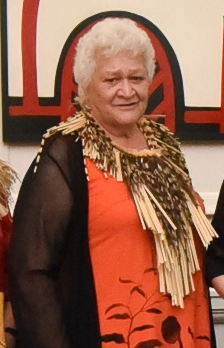
Sonia Armana Snowden is a New Zealand Māori tohunga raranga who tutored in arts and weaving at Te Wananga o Raukawa. She identifies with the Ngāpuhi iwi. Her works are held in the collection of Museum of New Zealand Te Papa Tongarewa.
Rangimahora Reihana-Mete was a New Zealand Māori tohunga raranga and textile artist. She was affiliated with the Ngāti Raukawa iwi. Her artworks are held in the Museum of New Zealand Te Papa Tongarewa. In 1974 she was awarded the British Empire Medal and in 1992 the Order for Meritorious Service from Te Pihopatanga o Aotearoa.
Hinearangitoariari is a Māori artist.
Pip Devonshire is a New Zealand weaver, curator and weaving tutor. Part of the iwi (tribes) of Ngāti Te Au, Ngāti Manomano and Ngāti Raukawa ki te Tonga, Devonshire descends from several notable weavers. She began weaving in the 1980s and graduated from Te Wānanga o Raukawa with a bachelor's degree of design in art in 2000. After graduation she lectured there for two decades. Her works have been exhibited in various New Zealand institutions and galleries, including in the national museum Te Papa. She has also curated various exhibitions and as of 2023 works as a curator at the Mahara Gallery in Waikanae.




